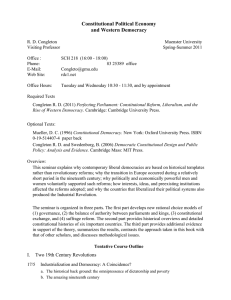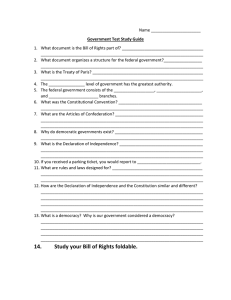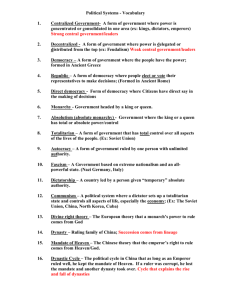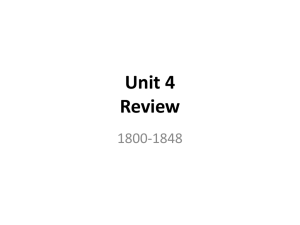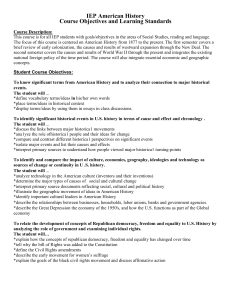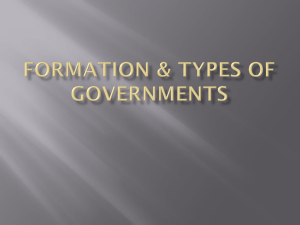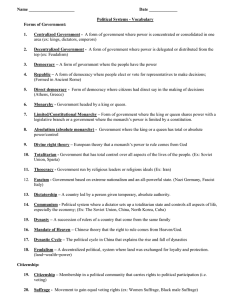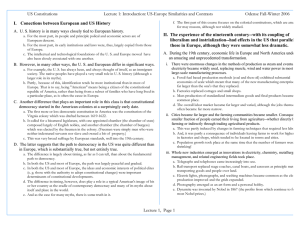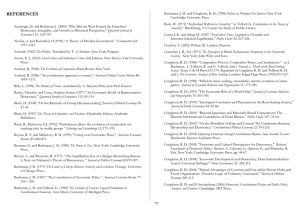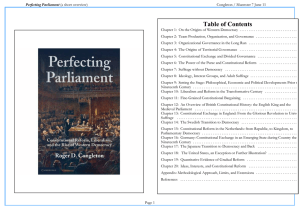Ideas and Interests in the Emergence of European Democracy
advertisement
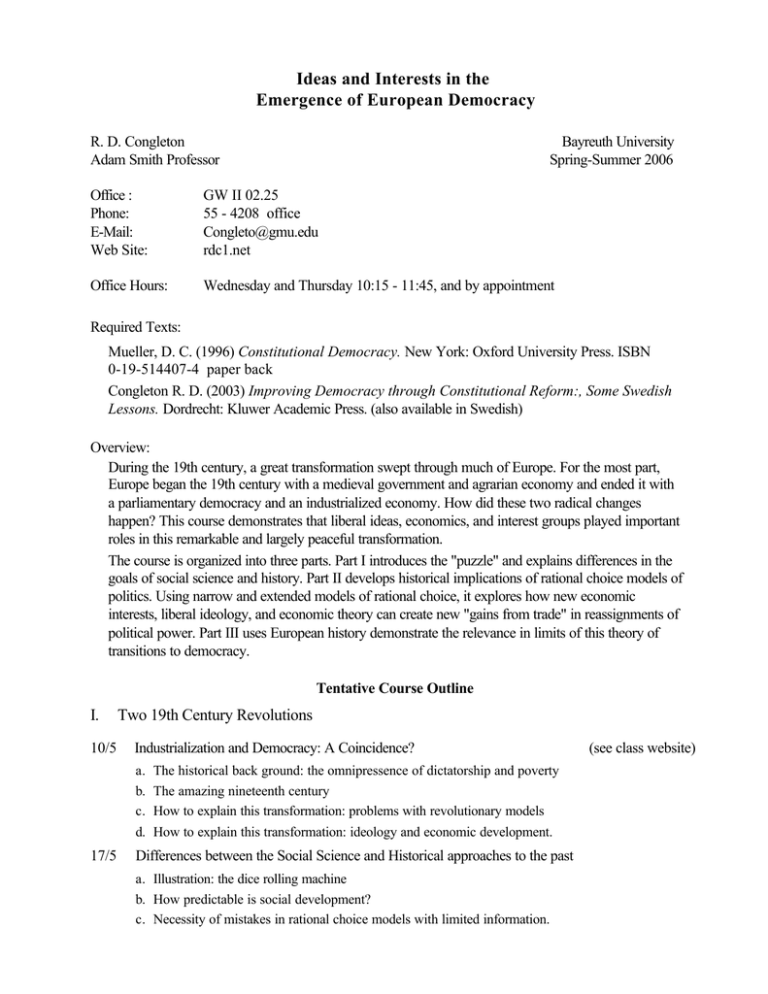
Ideas and Interests in the Emergence of European Democracy R. D. Congleton Adam Smith Professor Bayreuth University Spring-Summer 2006 Office : Phone: E-Mail: Web Site: GW II 02.25 55 - 4208 office Congleto@gmu.edu rdc1.net Office Hours: Wednesday and Thursday 10:15 - 11:45, and by appointment Required Texts: Mueller, D. C. (1996) Constitutional Democracy. New York: Oxford University Press. ISBN 0-19-514407-4 paper back Congleton R. D. (2003) Improving Democracy through Constitutional Reform:, Some Swedish Lessons. Dordrecht: Kluwer Academic Press. (also available in Swedish) Overview: During the 19th century, a great transformation swept through much of Europe. For the most part, Europe began the 19th century with a medieval government and agrarian economy and ended it with a parliamentary democracy and an industrialized economy. How did these two radical changes happen? This course demonstrates that liberal ideas, economics, and interest groups played important roles in this remarkable and largely peaceful transformation. The course is organized into three parts. Part I introduces the "puzzle" and explains differences in the goals of social science and history. Part II develops historical implications of rational choice models of politics. Using narrow and extended models of rational choice, it explores how new economic interests, liberal ideology, and economic theory can create new "gains from trade" in reassignments of political power. Part III uses European history demonstrate the relevance in limits of this theory of transitions to democracy. Tentative Course Outline I. 10/5 Two 19th Century Revolutions Industrialization and Democracy: A Coincidence? a. The historical back ground: the omnipressence of dictatorship and poverty b. The amazing nineteenth century c. How to explain this transformation: problems with revolutionary models d. How to explain this transformation: ideology and economic development. 17/5 Differences between the Social Science and Historical approaches to the past a. Illustration: the dice rolling machine b. How predictable is social development? c. Necessity of mistakes in rational choice models with limited information. (see class website) II. Analytical History: Models of Peaceful Constitutional Reform 24/5 The continuum between democracy and dictatorship (see class website) a. The Medieval Constitution: Kings and "their" Parliaments. b. Parliaments as tax councils. c. The possibilities for Constitutional Exchange in the King and Council model 31/5 Economic Change and the Balance of Power between King and Parliament a. The power of the purse. b. The comparative statics of the demand for and supply of tax resources. 7/6 Choosing Members of Parliament a. By interest group (not class) b. Through (wealth) limited suffrage c. First past the post elections and the median voter 14/6 Expanding Suffrage, a Slippery Slope? a. The median voter's demand for suffrage reform. b. Suffrage is not an ordinary supperior good. c. Beyond narrow self interest, a demand for the good society? 21/6 Persuasive suffrage movements a. The Leveler Agenda? b. Economic and Political "liberals" c. Persuasion and the demand for suffrage 28/6 The Liberal-Labor Alliance a. Shared interests in suffrage reform b. Strike threats as a bargaining method III. Case Histories as Tests of a Theory 5/7 Illustration: the British, Danish and Swedish Cases 12/7 Illustrations: the Danish and Belgian Cases 19/7 Parallel developments in Germany, France, Italy, and Japan (Limits?) 26/7 Conclusion and Overview Grades: Take Home Midterm (20%) and Paper (80%) (see class website) C:3-5
